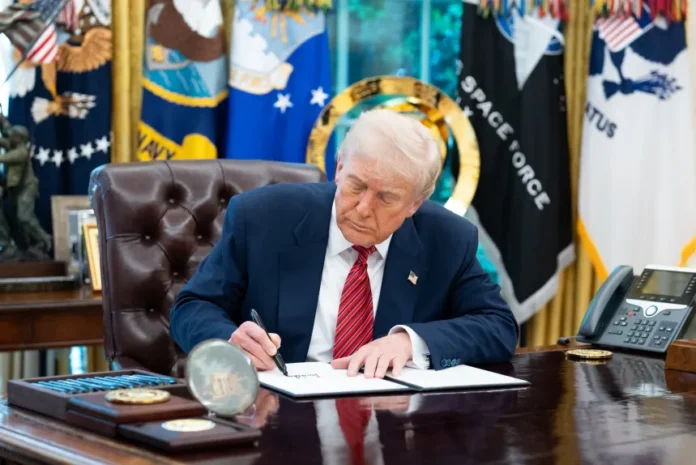The United States has intensified global trade tensions by threatening steep tariffs on imports from 14 countries, even as negotiations over “reciprocal” trade measures show little progress ahead of an August 1 deadline.
President Donald Trump announced on Monday that 25% tariffs will be imposed on goods from Japan and South Korea starting next month. In a later statement, he revealed that letters had been sent to leaders of 12 other nations, including Malaysia, South Africa, Indonesia, Bangladesh, and Thailand, informing them of upcoming tariffs ranging from 25% to 40%.
The tariffs are structured as follows:
- 25%: Japan, South Korea, Malaysia, Kazakhstan, Tunisia
- 30%: South Africa, Bosnia and Herzegovina
- 32%: Indonesia
- 35%: Bangladesh, Serbia
- 36%: Cambodia, Thailand
- 40%: Laos, Myanmar
Trump justified the move on economic and national security grounds, claiming the measures are necessary to correct longstanding trade imbalances. He warned that any retaliatory tariffs would be met with proportional increases from the U.S.
In letters to affected countries, the president argued the rates were “far less than what is needed to eliminate the trade deficit disparity” and cautioned against circumventing the tariffs through third-country rerouting, which would attract higher penalties.
U.S. Treasury Secretary Scott Bessent reinforced the administration’s stance, saying on Sunday that countries failing to reach agreements by August 1 would face the full brunt of the tariffs announced earlier in April.
Global reactions were swift:
- South Africa called for a “balanced and mutually beneficial” dialogue.
- Japan’s Prime Minister Shigeru Ishiba said Tokyo is “prepared for all tariff contingencies.”
- South Korea’s President Lee Jae-myung described talks as “difficult,” citing unclear positions on both sides.
- India notified the WTO of its intent to impose retaliatory duties on U.S. goods.
- Vietnam urged the U.S. to recognize its market economy status and remove tech export restrictions.
- The EU signaled readiness for a deal, but warned of “firm countermeasures” if talks fail.
Financial markets responded sharply. On Monday, the Dow Jones Industrial Average dropped 422.17 points (0.94%), while the S&P 500 and NASDAQ Composite fell by 0.79% and 0.92%, respectively, amid investor fears of renewed global trade conflict.
Analysts cautioned that the escalating standoff could reignite supply chain disruptions and market volatility, setting the stage for another turbulent period in global commerce.
Written By Rodney Mbua



















